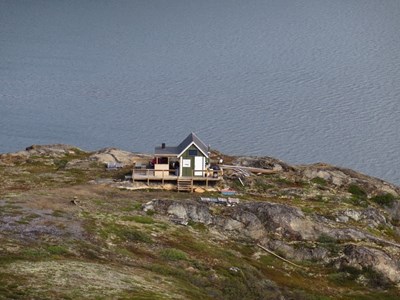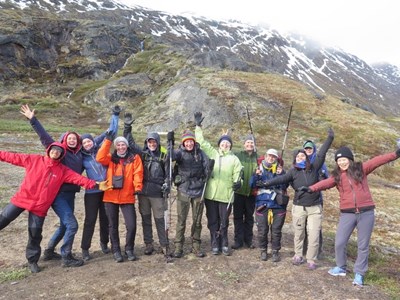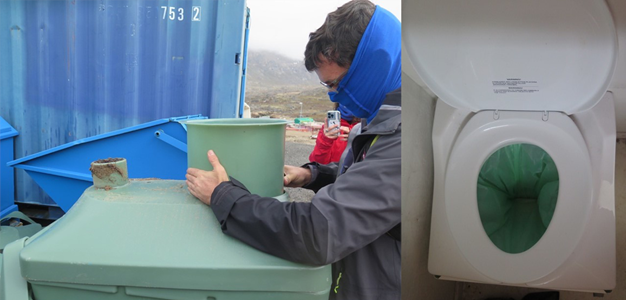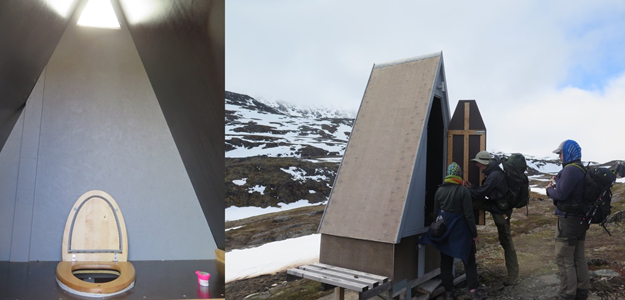The summer school was organized so that students combined lessons learned in online and in-person lectures about water, sanitation, and hygiene topics from the Arctic area with case studies in and around Sisimiut, Greenland. Sahra’s case study was located in the first fjord, Kangerluarsuk Tulleq, where it is common for local people to have a vacation cabin along the water.
Here is her account of the case study and summer school:

Our project was about improving the toilet situation in remote cabins in Greenland. To have an idea what those remote cabins look like and what their typical surrounding is, we visited Lillehytte. For our group, it was essential to see how the hut was built and how the topography around it can be used for a toilet solution. After visiting Lillehytte, we had a clear image of the challenges and the needs that we face. This clear image was crucial for brainstorming some potential solutions.
We stayed at Lillehytte for one night. For a technical solution, this long stay wasn’t mandatory, but for social reasons and to get a feeling for the hut, it was a huge advantage. The stay was definitely beneficial to get to know our group and our instructors, which led to fun and effective group work.

Having a specific case study allowed me to apply the learned material. I really understood the challenges such as permafrost, days without sunlight, harsh climate and remoteness, once I worked at the case study. Often, my instinctive solutions were not feasible due to the Arctic conditions, and applying what I have learned allowed me to get a better understanding for it. It was super interesting to see and discuss already existing toilet solutions (e.g. the Icelandic toilet, a model of a dry toilet and its improvement, Cinderella, ...) and designing a new toilet solution by improving one that already exists. The most challenging part was to find a solution for clean and dry toilets without using complex technology.


The stay in Sisimiut broadened my knowledge and understanding of the Arctic. Living in the cold climate, seeing the environmental infrastructure of Sisimiut, talking to Greenlandic people, and having lectures about a variety of Arctic projects regarding water, sanitation and health, was very interesting. Meeting people from all over the world and learning about their individual projects, was extremely inspiring. It gave me some new perspectives of what kind of projects I could do with my newly obtained degree in Civil Engineering. I truly recommend joining the Artic WASH program.
Written by Sahra Sabil
